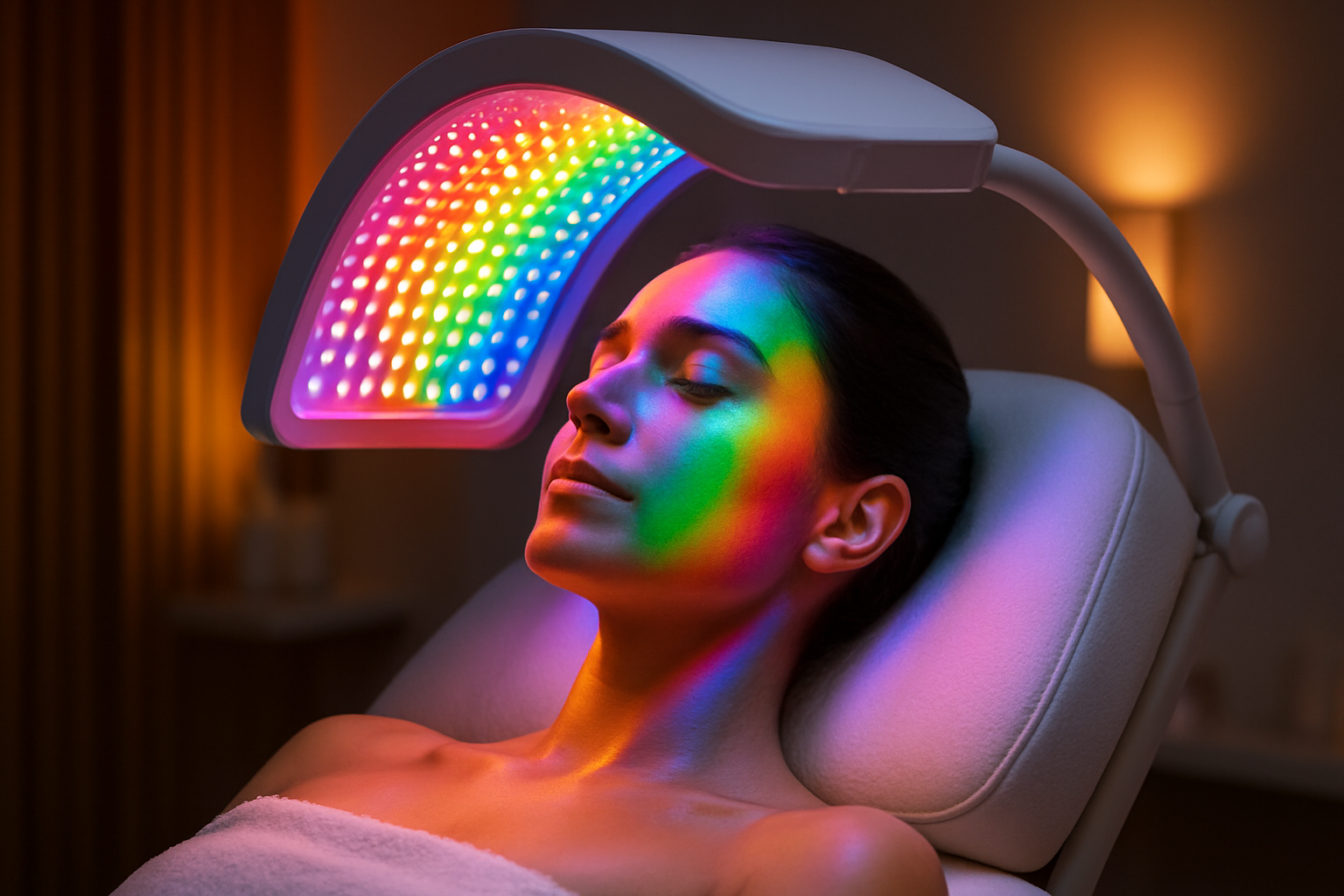Chromotherapy: The Spectrum of Wellness
In a world where wellness trends come and go, one ancient practice is making a colorful comeback. Chromotherapy, also known as color therapy, is emerging as a vibrant player in the beauty and fitness landscape. This holistic approach harnesses the power of different light wavelengths to promote physical and emotional well-being. As more people seek natural, non-invasive ways to enhance their health and appearance, chromotherapy is stepping into the spotlight. From spa treatments to home devices, this rainbow-hued technique is painting a new picture of what it means to glow from the inside out.

In the modern era, chromotherapy gained scientific attention in the late 19th century. Danish physician Niels Ryberg Finsen won the Nobel Prize in Medicine in 1903 for his groundbreaking work using light to treat lupus vulgaris. This milestone paved the way for further research into the therapeutic applications of light and color.
As the 20th century progressed, chromotherapy found its way into various wellness practices. However, it often existed on the fringes of mainstream medicine, viewed with skepticism by the scientific community. Today, with advancements in light technology and a growing body of research, chromotherapy is experiencing a renaissance in both clinical settings and the beauty industry.
The Science Behind the Spectrum
At its core, chromotherapy is based on the principle that different colors of light can affect the body’s physiological and psychological states. Each color corresponds to a specific wavelength of light, which is believed to interact with the body in unique ways.
Red light, for instance, is associated with stimulation and energy. It’s thought to increase circulation and promote collagen production, making it popular in anti-aging treatments. Blue light, on the other hand, is known for its calming properties and potential to combat acne-causing bacteria.
While some effects of chromotherapy are still being studied, certain applications have gained scientific backing. Light therapy for seasonal affective disorder (SAD) is now a recognized treatment, typically using bright white light to mimic sunlight and regulate circadian rhythms.
In the realm of skincare, LED light therapy has shown promising results. A 2014 study published in the journal “Photomedicine and Laser Surgery” found that red LED light therapy improved skin complexion and intradermal collagen density. This has led to an influx of at-home LED masks and professional light therapy treatments in spas and dermatology offices.
Chromotherapy in Modern Wellness Practices
The beauty and fitness industries have embraced chromotherapy with open arms, integrating it into a wide array of products and services. Luxury spas now offer chromotherapy showers and saunas, where clients can bask in a spectrum of colored lights designed to address different wellness goals.
In the fitness world, chromotherapy is making its way into workout spaces. Some innovative gyms and studios are incorporating color-changing LED systems into their environments. These setups allow instructors to adjust the room’s ambiance to match the energy of the workout or promote specific moods during different phases of exercise.
The skincare industry has perhaps seen the most significant impact from chromotherapy. LED face masks have become a staple in many beauty routines, promising to reduce wrinkles, fight acne, and improve overall skin tone. Major beauty brands are also incorporating light therapy into their in-store experiences, offering customers quick chromotherapy sessions as part of their shopping experience.
DIY Chromotherapy: Bringing Color Home
The growing interest in chromotherapy has led to a surge in consumer products designed for home use. From light therapy lamps for mood enhancement to color-changing shower heads for a spa-like experience, these products are making chromotherapy accessible to a wider audience.
Smart lighting systems have also jumped on the chromotherapy bandwagon. Companies are developing apps that allow users to program their home lighting to support their circadian rhythms or create specific mood-enhancing color schemes. This integration of technology and chromotherapy is opening up new possibilities for personalized wellness routines.
For those looking to dip their toes into chromotherapy without investing in specialized equipment, simple practices like color visualization meditation or wearing specific colors to influence mood are gaining popularity. These accessible approaches allow individuals to explore the potential benefits of color therapy in their daily lives.
The Future of Chromotherapy: A Bright Outlook
As research in the field of photobiomodulation (the use of light to heal and protect tissue) continues to advance, chromotherapy is likely to gain more scientific validation and mainstream acceptance. The intersection of chromotherapy with other emerging technologies, such as virtual reality and biofeedback systems, holds exciting potential for personalized wellness experiences.
In the beauty industry, we can expect to see more sophisticated at-home devices that combine different light wavelengths for targeted skincare treatments. The fitness sector may incorporate responsive lighting systems that adapt to users’ biometrics in real-time, optimizing workout environments for peak performance and recovery.
As consumers become more aware of the impact of light on their well-being, demand for chromotherapy-infused products and services is likely to grow. This could lead to innovations in everything from wearable tech to architectural lighting design, all aimed at harnessing the power of color for health and wellness.
However, as chromotherapy gains popularity, it’s crucial to approach it with a balanced perspective. While certain applications have shown promise, more research is needed to fully understand the extent of its benefits and potential limitations. As with any wellness trend, it’s important for consumers to stay informed and consult with healthcare professionals when incorporating new practices into their routines.
In conclusion, chromotherapy represents a vibrant fusion of ancient wisdom and modern technology in the pursuit of wellness. As it continues to evolve and integrate into various aspects of beauty and fitness, chromotherapy offers a colorful palette of possibilities for those seeking to enhance their physical and emotional well-being. Whether through professional treatments or simple daily practices, the spectrum of chromotherapy is painting a promising picture for the future of holistic health.





